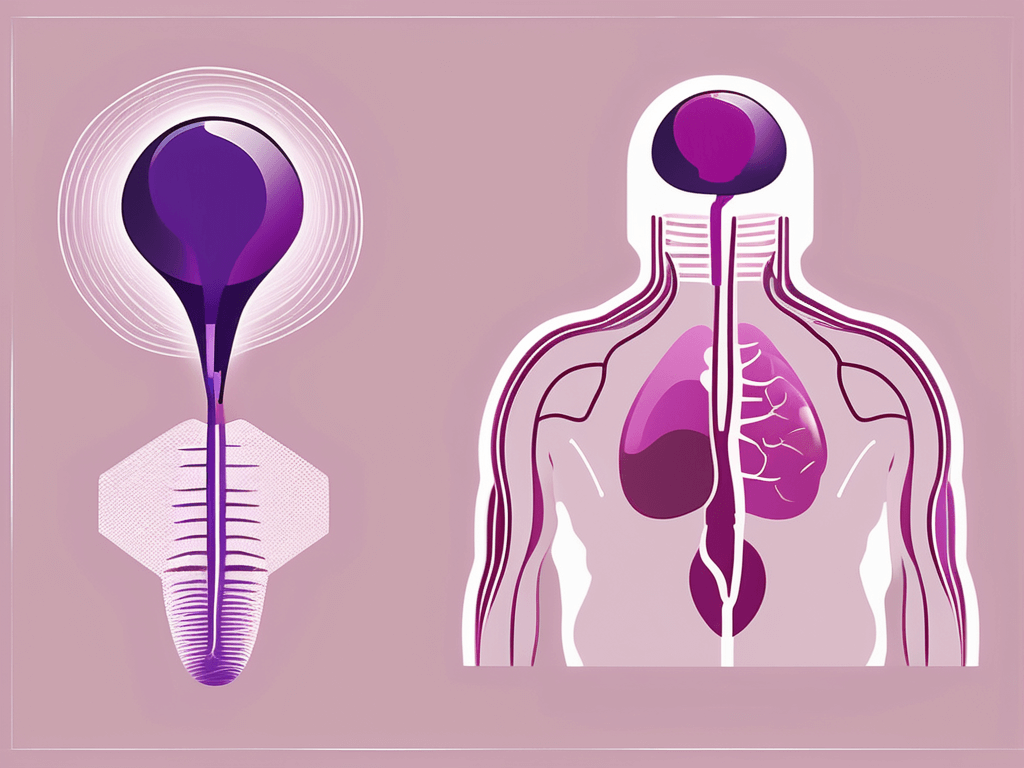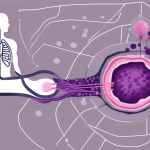An enlarged prostate, or benign prostatic hyperplasia (BPH), is a prevalent condition among aging men, impacting urinary function and quality of life. This article explores its causes, symptoms, and treatment options. Learn how BPH develops due to prostate gland growth, leading to urinary issues like frequent urination and weak flow. Discover diagnostic procedures, including medical history and physical exams, and treatment approaches such as medications and surgical interventions like TURP. Empower yourself with knowledge to effectively manage an enlarged prostate and improve prostate health.
An enlarged prostate, also known as benign prostatic hyperplasia (BPH), is a common condition that affects many men as they age. It can cause bothersome symptoms and impact your quality of life. In this article, we will delve into the causes, symptoms, and treatment options for an enlarged prostate, providing you with the knowledge and understanding you need to navigate this condition.
What is an Enlarged Prostate?
To understand an enlarged prostate, we must first define the prostate gland itself. The prostate gland is a small walnut-shaped organ that surrounds the urethra, the tube through which urine flows from the bladder out of the body. Its primary function is to produce seminal fluid, which nourishes and transports sperm during ejaculation.
As men age, it is common for the prostate gland to undergo a natural growth process. This growth, known as benign prostatic hyperplasia (BPH), is a non-cancerous condition that affects many older men. BPH occurs when the cells of the prostate gland multiply, causing the gland to enlarge. While this growth is generally harmless, it can lead to various symptoms and complications.
When the prostate gland becomes enlarged, it can press against the urethra, obstructing the flow of urine. This can result in a range of urinary symptoms, such as frequent urination, weak urine flow, difficulty starting and stopping urination, and the feeling of incomplete bladder emptying. Some men may also experience urinary tract infections, bladder stones, or even kidney damage if the condition is left untreated.
While the exact cause of BPH is unknown, hormonal changes that occur with age are believed to play a role. As men get older, the balance of hormones in their bodies changes, with a gradual increase in the levels of dihydrotestosterone (DHT), a hormone derived from testosterone. DHT is thought to stimulate the growth of prostate cells, leading to the enlargement of the gland.
Other factors that may contribute to the development of an enlarged prostate include family history, obesity, and certain medical conditions such as diabetes and heart disease. Additionally, lifestyle factors such as a sedentary lifestyle, poor diet, and smoking may also increase the risk.
Diagnosing an enlarged prostate typically involves a thorough medical history, physical examination, and various tests. These may include a digital rectal examination (DRE), a blood test to measure prostate-specific antigen (PSA) levels, and imaging tests such as ultrasound or a prostate biopsy to rule out prostate cancer.
Treatment options for an enlarged prostate depend on the severity of symptoms and the impact on the individual’s quality of life. Mild cases may be managed through lifestyle changes, such as avoiding caffeine and alcohol, practicing bladder training exercises, and maintaining a healthy weight. Medications, such as alpha-blockers or 5-alpha reductase inhibitors, may also be prescribed to help relax the muscles of the prostate and improve urine flow.
In more severe cases, where symptoms are significantly affecting daily life, surgical intervention may be necessary. There are several surgical procedures available to treat an enlarged prostate, including transurethral resection of the prostate (TURP), laser surgery, and minimally invasive procedures such as transurethral microwave thermotherapy (TUMT) or prostatic urethral lift (PUL).
Regular follow-up with a healthcare provider is essential for men with an enlarged prostate to monitor symptoms and ensure appropriate management. It is important to seek medical attention if symptoms worsen or if there are any concerns about potential complications.
In conclusion, an enlarged prostate, or benign prostatic hyperplasia, is a common condition that affects many older men. While it is a non-cancerous growth, an enlarged prostate can cause urinary symptoms and complications. Understanding the causes, symptoms, and treatment options can help individuals manage this condition effectively and maintain a good quality of life.
Causes of an Enlarged Prostate
Several factors contribute to the development of an enlarged prostate, including age-related changes, hormonal fluctuations, and genetic predisposition.
Age-Related Factors
As men get older, the risk of developing an enlarged prostate increases. This is a natural part of the aging process and is known as benign prostatic hyperplasia (BPH). BPH occurs when the prostate gland, which is located below the bladder and surrounds the urethra, gradually enlarges. The exact cause of this age-related prostate growth is not fully understood, but it is believed to be influenced by hormonal changes and the accumulation of certain substances in the prostate tissue.
While not all men will experience bothersome symptoms, it is important to be aware of the potential for prostate enlargement as you age. Regular check-ups with a healthcare provider can help monitor the size of the prostate and detect any abnormalities early on.
Hormonal Changes
Hormonal fluctuations, particularly an increase in estrogen levels relative to testosterone, can contribute to prostate growth. Estrogen is a female hormone, but it is also present in small amounts in men. As men age, the balance between estrogen and testosterone can shift, with estrogen levels increasing and testosterone levels decreasing. This hormonal imbalance can stimulate the growth of prostate cells, leading to an enlarged prostate.
In addition to hormonal changes associated with aging, certain medications or medical conditions that affect hormone levels can also contribute to prostate enlargement. For example, some medications used to treat prostate cancer, such as androgen deprivation therapy, can cause hormonal imbalances that result in prostate growth.
Genetic Predisposition
There is evidence to suggest that genetics can play a role in the development of an enlarged prostate. If you have a family history of BPH, you may be at a higher risk of experiencing prostate enlargement yourself. Researchers have identified specific genes that may be associated with an increased susceptibility to developing BPH. However, it is important to note that having a genetic predisposition does not guarantee that you will develop an enlarged prostate. Environmental factors and lifestyle choices also play a significant role in prostate health.
Understanding the causes of an enlarged prostate can help individuals take proactive steps to maintain their prostate health. Regular exercise, a balanced diet, and avoiding known risk factors such as smoking and excessive alcohol consumption can all contribute to a healthy prostate. Additionally, discussing any concerns or symptoms with a healthcare provider can lead to early detection and appropriate management of prostate enlargement.
Recognizing the Symptoms of an Enlarged Prostate
While the specific symptoms of an enlarged prostate can vary, there are some common physical signs to be aware of.
Common Physical Symptoms
Frequent urination, especially at night, is a common symptom of an enlarged prostate. You may also experience a weak urine stream, a feeling of incomplete bladder emptying, and difficulty starting and stopping urination. Other symptoms may include dribbling at the end of urination, urinary urgency, and the need to strain to urinate.
Potential Complications
If left untreated, an enlarged prostate can lead to more severe complications such as urinary tract infections, bladder stones, and the inability to urinate, which requires immediate medical attention. It is important to seek medical advice if you are experiencing symptoms or have concerns about your prostate health.
Diagnostic Procedures for an Enlarged Prostate
To accurately diagnose an enlarged prostate, your healthcare provider will need to perform various diagnostic procedures.
Medical History and Physical Examination
Your doctor will begin by taking a detailed medical history, asking about your symptoms and any other relevant information. They will then conduct a physical examination, which may include a digital rectal exam to assess the size and condition of your prostate gland.
Laboratory Tests
Urinalysis and blood tests may be conducted to rule out other conditions and evaluate kidney function. These tests can help your doctor determine the appropriate course of treatment.
Imaging Tests
In some cases, imaging tests such as a transrectal ultrasound or a cystoscopy may be performed to gain a clearer picture of the prostate and the urinary tract. These tests can provide valuable information regarding the size and shape of the prostate, aiding in treatment planning.
Treatment Options for an Enlarged Prostate
There are various treatment options available to manage the symptoms of an enlarged prostate and improve your quality of life.
Medications for Prostate Enlargement
In certain cases, your doctor may prescribe medication to help reduce the size of your prostate or alleviate symptoms. These medications work by relaxing the muscles in the prostate and bladder, improving urine flow and reducing obstruction.
Surgical Interventions
If medications are not effective or if your symptoms are severe, your doctor may recommend surgical intervention. There are several surgical procedures available, including transurethral resection of the prostate (TURP), laser therapy, and minimally invasive procedures. These surgeries aim to remove or reduce excess prostate tissue, allowing for improved urine flow.
Lifestyle Changes and Home Remedies
Alongside medical treatments, certain lifestyle modifications can help manage symptoms and promote prostate health. These may include avoiding caffeine and alcohol, practicing pelvic floor exercises, maintaining a healthy weight, and emptying your bladder completely when urinating.
In conclusion, understanding the causes, symptoms, and treatment options for an enlarged prostate is crucial in managing this common condition. By seeking medical advice, receiving an accurate diagnosis, and considering appropriate treatment, you can regain control over your prostate health and improve your overall wellbeing. Remember, you are not alone, and together, we can navigate this journey towards optimal prostate health.






